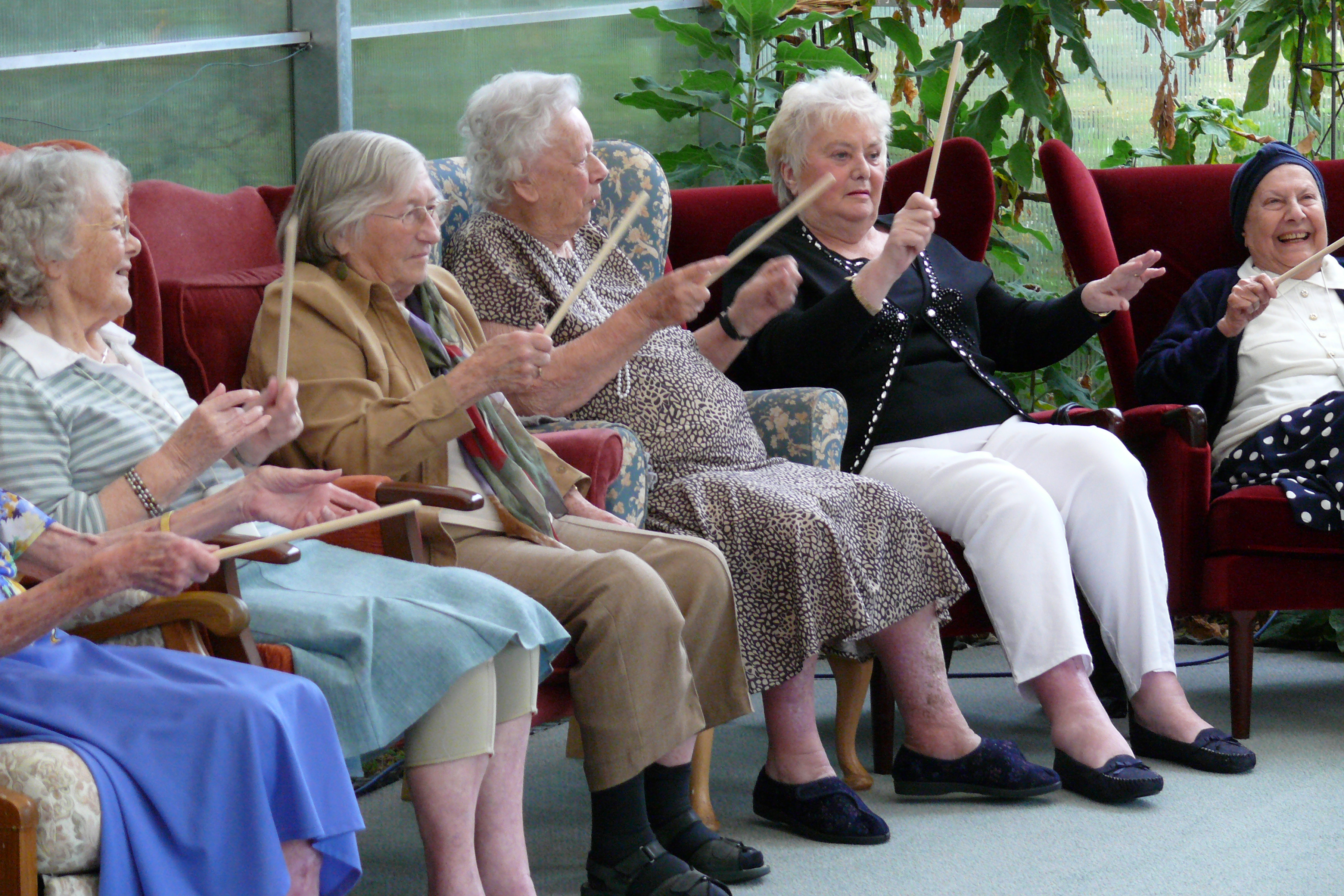As we get older and find it more difficult doing day-to-day tasks, our bodies become weak. Incorporating exercise into your activity programme is a must, says Robyn Taylor, as she provides a simple guide to running armchair workouts, which are especially beneficial throughout the winter…
Keeping fit is particularly important at all ages. Many people shudder at the thought of exercising, but we all know we need it to keep healthy.
Time is of the essence, and if you haven’t got exercise on your planner today, then today is the day to start! And it doesn’t need to be complicated. Before you start your planned activity, encourage everyone to do five minutes of armchair fitness to wake them up and get motivated. Even if you are sitting around a table about to do a painting session, just prompt everyone to grab a paintbrush and tap it on the table, hold it in the air, use it as a wand etc. Then when you are writing your planner for the following week or month, you can assign a slot for it.

ARMCHAIR SESSIONS: TOP TIPS
Don’t worry if not everyone wants to join in. They may enjoy just watching or listening to the music, but remember to keep inviting them along, as one day they may decide to attempt some of the moves!
You know your residents. Tailor the sessions to them. Find out what their favourite music is, what their hobbies were, and merge that into the routine (golf swings, swimming, rocking the baby etc). Add props or even fancy dress.
HOW TO STRUCTURE A CHAIR-BASED WORKOUT
- Set the room up with space in-between each chair so people can stretch out.
- Place a notice on the door so you do not get any disturbances.
- Place yourself in the middle of the room so everyone can see you.
- Prepare your music. Have your music nearby so you can stop and start when you need to.
- Ensure there is a clear pathway to the door, as people may want to get up and walk out during the activity.
- Try and make the room as bright as possible – natural light will keep everyone awake and motivated.
- Welcome everyone to the session. Keep active yourself and ensure you are bouncing and moving around the room, involving every person who is there.
- Spontaneously start singalongs throughout – it should be fun and exciting.
- Add conversation between the songs, for example: “The next song we are going to move to is ‘The Battle Hymn’, but have you heard the Man United version? Sing along with me if you have! What teams do we all support then?” and so on.
- Alternate your moves so there isn’t too much repetitiveness or strain on one part of the body. Top half, bottom half, top half, bottom half. Don’t forget to use every part of the body from your toes to your nose.
- Explain and demonstrate the move – use your imagination and compare the movement to an action, for example, stretching your arms in the air to mimic picking apples off a tree.
- Praise and encourage all the way through your session. Address the person by their name, help them by guiding their arms and legs if needed.
- Not everyone has the same ability, so try and give each move an alternative version if needed. If someone is unable to lift their arm, encourage them to tap their fingers to the music. On the other hand, if someone is physically able, make the move more challenging.
- You know your residents. Start small and make each session a bit longer.
- At the end of the session, take some time to all enjoy a nice cuppa or glass of water to rehydrate.

Some other points to think about:
- Group sessions are great when you are doing a chair-based workout as people motivate each other.
- If you can, and for health and safety reasons, having two members of staff in the room is beneficial. One person can deliver the session and the other can go around and support the individual movements.
- For those who do not want to join in, tailor the session to one-to-ones in bedrooms. Even if the person is bedbound, they can still be involved. Concentrate on smaller movements such as wiggling their toes, elevating one leg etc.
And remember, exercise doesn’t just have to just be aerobics. It can be a nice stroll in the back garden, dancing to your favourite song, cleaning up and making beds. Just day-to-day tasks are essential for keeping active. The famous saying springs to mind: ‘Use it or lose it’. Alternatively, you could go swimming, walking, play football, golf – or even the one activity that keeps making the news – ice skating with the elderly!
Have fun, get moving and make people happy and healthy!




